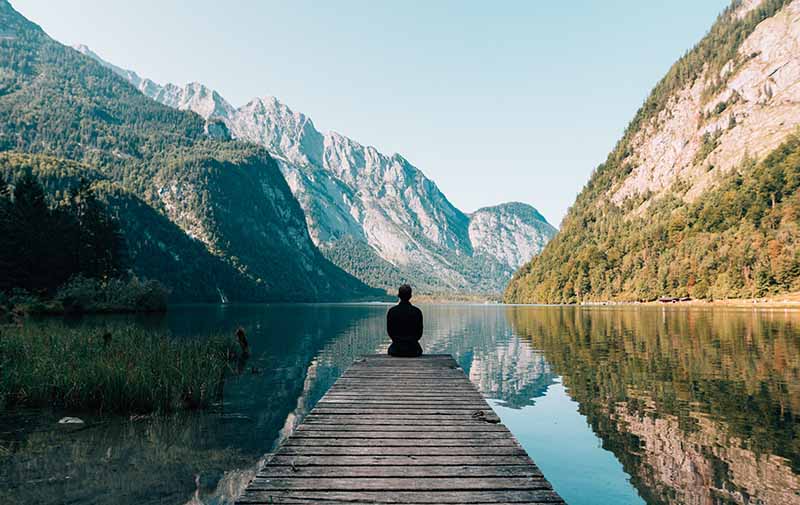
The travel and tourism sectors have changed dramatically over the past year. This change is unprecedented and unexpected. As we move into a new future, wellness tourism will thrive, thanks to an elevated public interest in personal health and demand for the services of dedicated wellness professionals. Anne Dimon, President & CEO of the Wellness Tourism Association, explains.

In March of 2020, when we were all beginning to recognize and accept the fact that the newly identified pandemic would severely impact not only the tourism industry but our daily lives, I posted a new cover photo in the Wellness Tourism Association Facebook Group: “The wellness tourism industry will weather this and be stronger for it.” I believed it then. I believe it now.
For many, the very concept of personal health has become the new norm. As the industry begins to recover, that overriding concern about personal health will continue to remain a focus – not only on the home front but as more people feel comfortable traveling again.
What does that mean for the industry? More demand. Not only from those new to wellness living, but from those who want to position “good health” as a lifestyle priority, but may not know where to begin. These are the people who will seek out the hospitality stakeholders with designated programs and multi-day retreats operated by trusted wellness professionals who can guide them on the various paths to reaching their personal health goals.
A few foreseeable trends and challenges for wellness tourism
More connection with nature
It is widely accepted that nature will play an increasingly important role in the wellness tourism sector. Easily accessible lakes, mountains, hot springs, forests and other natural resources will become prime assets to industry stakeholders. As the industry recovers and rebounds, more travelers will want to avoid congested cities and over-populated tourist attractions in favor of smaller cities, towns and more remote locations surrounded by nature.
Solo travel & connection with the like-minded
The trend of solo travel for wellness-focused trips was identified in both the 2019 and 2020 consumer surveys conducted by the WTA. The 2020 survey, which collected responses from close to 4,000 respondents, reinforced that trend, plus the importance of social connection and being with the like-minded. Molly Anderson, Vice President, Sales at Canyon Ranch says, “some of our guests have been sharing close quarters during the pandemic and are now seeking to be alone to journey within and focus on a wellness goal, while others have been alone and are craving human touch (massage, for instance) and meaningful face-to-face conversations with like-minded individuals.”
Regenerative travel
Based on the general concept of “building it back better,” regenerative travel calls for the traveler to leave a geographic destination better than he or she found it. Supporting local producers, vendrs and service providers, for instancing. Or, volunteering with a local community initiative.
Under the banner of “regenerative travel,” we will see the rise of more environmentally-conscious modes of travel, and the marketing of closer-to-home options. Most support the premise that “wellness” as a travel style is not only good for the person but inherently good for the planet, due to the emphasis on and importance of nature and environmental sustainability that is promoted as part of wellness tourism offerings.
For example, John Nielsen, General Manager of Fivelements Retreat, Bali is seeing guests embracing regenerative travel as they come to understand the impact they leave behind. “We have started a plant-your-own- tree program, with great success,” he says.
In May of 2020, WeTravel polled their community of wellness travel providers to find out what the terms ‘sustainable’ or ‘regenerative’ travel meant to them. Jen Corley, Director of Development Wellness, explains that “while the ecological impact of tourism was, of course, noted as a key consideration, providers have a much broader view of how traveler demand is shifting.”
She says survey respondents pointed out that “socially, people are going to seek out more intentional experiences by being respectful and inclusive of everyone they encounter while away from home. Culturally, they will want to engage in positive interactions with hosting communities, being extra mindful of tourism’s impact on local people’s way of life. Economically, they will want to leave the destination community better off than when they arrived by ensuring their money is funnelled into entities that directly serve those they’ve visited.”
Working from “home”
Personally, I have been blessed to be able to work from anywhere in the world for close to 20 years. Over the last year, so many people have come to realize that they, too, have the tools and opportunity to do the same thing. Consequently, hotels and resorts are now promoting long-term stays with the encouragement to come visit and work from “home.” For example, at the time of writing, Carillon Miami was offering 30% off on stays of 10 to 30 days. Another example is Eden Roc Cap Cana in the Dominican Republic where a 30-night package for two adults and two children (including a variety of lessons for the kids while the parents work) was priced from $75,500.
Challenges include:
Growing competition
With more hotels and resorts entering the wellness space, the competition for the traditionally higher-spending wellness traveler, will become fierce. While a spa is a wonderful guest amenity, it is not mandatory for hotels/resorts looking to launch a wellness culture/initiative, so prepare for competition from the non-spa sector.
Developing a coordinated effort
Spa owners and managers may have to step up efforts to align with other departments – food & beverage, rooms division, sales and marketing and others – to insure the acceptance and support of a coordinated wellness culture/initiative.
Getting noticed
The challenge will be to find and communicate your point of distinction, with consistent messaging to target audiences across their preferred platforms – from social and traditional media, to e-newsletters, to print brochures and guest posts on related web sites and blogs. Raising your profile with the travel agent community – especially with those who identify as wellness travel specialists – will also gain in importance. While it is important to note that millennials may be the generational cohort to lead the recovery of the wellness travel sector, stakeholders cannot ignore the boomer and Gen X generations who are motivated, in part, by the desire to live healthier, longer.
As an industry, we will not only embrace the trends and new challenges brought about by the disruption of 2020, but will also weather the times and be stronger for it.
***
Anne Dimon is the Co-founder/President & CEO of the Wellness Tourism Association (www.wellnesstourismassociation.org) and Owner/Editor of www.traveltowellness.com
It’s time to look into our crystal balls and predict the future for the year ahead. Subscribe to our newsletter and download our special report on the trends we’ll be watching: Nine spa and wellness trends for 2021. Download here.
Spa Executive is published by Book4Time, the leader in guest management, revenue and mobile solutions for the most exclusive spas, hotels, and resorts around the globe. Learn more at book4time.com.




